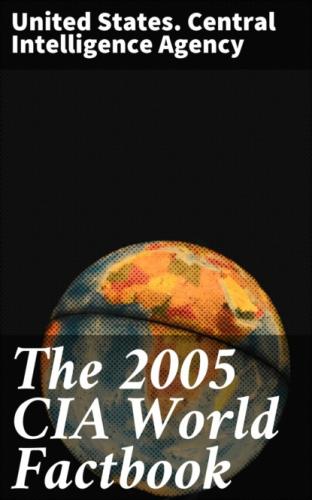Highways:
total: 2,525,989 km
paved: 1,448,655 km
unpaved: 1,077,334 km (1999)
Waterways:
14,500 km
note: 5,200 km on major rivers and 485 km on canals suitable for
mechanized vessels (2004)
Pipelines:
gas 6,171 km; liquid petroleum gas 1,195 km; oil 5,613 km; refined
products 5,567 km (2004)
Ports and harbors:
Chennai, Haldia, Jawaharal Nehru, Kandla, Kolkata (Calcutta),
Mumbai (Bombay), New Mangalore, Vishakhapatnam
Merchant marine:
total: 299 ships (1,000 GRT or over) 6,555,507 GRT/11,069,791 DWT
by type: bulk carrier 85, cargo 75, chemical tanker 13, combination
ore/oil 1, container 7, liquefied gas 14, passenger 3,
passenger/cargo 9, petroleum tanker 91, roll on/roll off 1
foreign-owned: 10 (Australia 1, China 1, Greece 1, UAE 6, United
Kingdom 1)
registered in other countries: 30 (2005)
Airports:
333 (2004 est.)
Airports - with paved runways: total: 234 over 3,047 m: 14 2,438 to 3,047 m: 47 1,524 to 2,437 m: 78 914 to 1,523 m: 74 under 914 m: 21 (2004 est.)
Airports - with unpaved runways: total: 99 2,438 to 3,047 m: 3 1,524 to 2,437 m: 9 914 to 1,523 m: 42 under 914 m: 45 (2004 est.)
Heliports: 20 (2004 est.)
Military India
Military branches:
Army, Navy (includes naval air arm), Air Force, Coast Guard,
various security or paramilitary forces (includes Border Security
Force, Assam Rifles, National Security Guards, Indo-Tibetan Border
Police, Special Frontier Force, Central Reserve Police Force,
Central Industrial Security Force, Railway Protection Force, and
Defense Security Corps)
Military service age and obligation:
16 years of age for voluntary military service (2001)
Manpower available for military service:
males age 16–49: 287,551,111 (2005 est.)
Manpower fit for military service:
males age 16–49: 219,471,999 (2005 est.)
Manpower reaching military service age annually:
males: 11,446,452 (2005 est.)
Military expenditures - dollar figure:
$18.86 billion (2005)
Military expenditures - percent of GDP:
2.93% (2005/06)
Transnational Issues India
Disputes - international:
China and India launched a security and foreign policy dialogue in
2005, consolidating discussions related to the dispute over most of
their rugged, militarized boundary, regional nuclear proliferation,
Indian claims that China transferred missiles to Pakistan, and other
matters; recent talks and confidence-building measures have begun to
defuse tensions over Kashmir, site of the world's largest and most
militarized territorial dispute with portions under the de facto
administration of China (Aksai Chin), India (Jammu and Kashmir), and
Pakistan (Azad Kashmir and Northern Areas); in 2004, India and
Pakistan instituted a cease fire in the Kashmir and in 2005,
restored bus service across the highly militarized Line of Control;
Pakistan has taken its dispute on the impact and benefits of India's
building the Baglihar dam on the Chenab River in Jammu and Kashmir
to the World Bank for arbitration; UN Military Observer Group in
India and Pakistan (UNMOGIP) has maintained a small group of
peacekeepers since 1949; India does not recognize Pakistan's ceding
historic Kashmir lands to China in 1964; disputes persist with
Pakistan over Indus River water sharing; to defuse tensions and
prepare for discussions on a maritime boundary, in 2004, India and
Pakistan resurveyed a portion of the disputed boundary in Sir Creek
estuary at the mouth of the Rann of Kutch; Pakistani maps continue
to show Junagadh claim in Indian Gujarat State; discussions with
Bangladesh remain stalled to delimit a small section of river
boundary, to exchange 162 miniscule enclaves in both countries, to
allocate divided villages, and to stop illegal cross-border trade,
migration, violence, and transit of terrorists through the porous
border; Bangladesh protests India's attempts to fence off
high-traffic sections; dispute with Bangladesh over New Moore/South
Talpatty/Purbasha Island in the Bay of Bengal deters maritime
boundary delimitation; India seeks cooperation from Bhutan and Burma
to keep Indian Nagaland and Assam separatists from hiding in remote
areas along the borders; Joint Border Committee with Nepal continues
to demarcate minor disputed boundary sections; India has instituted
a stricter border regime to keep out Maoist insurgents and control
illegal cross-border activities from Nepal
Refugees and internally displaced persons:
refugees (country of origin): 92,394 (Tibet/China) 60,922 (Sri
Lanka)
IDPs: 650,000 (Jammu and Kashmir conflicts; most IDPs are Kashmiri
Hindus); 113,000 (resulting from 26 December 2004 tsunami) (2004)
Illicit drugs:
world's largest producer of licit opium for the pharmaceutical
trade, but an undetermined quantity of opium is diverted to illicit
international drug markets; transit point for illicit narcotics
produced in neighboring countries; illicit producer of methaqualone;
vulnerable to narcotics money laundering through the hawala system
This page was last updated on 20 October, 2005
======================================================================
@Indian Ocean
Introduction Indian Ocean
Background:
The Indian Ocean is the third largest of the world's five oceans
(after the Pacific Ocean and Atlantic Ocean, but larger than the
Southern Ocean and Arctic Ocean). Four critically important access
waterways are the Suez Canal (Egypt), Bab el Mandeb
(Djibouti-Yemen), Strait of Hormuz (Iran-Oman),
